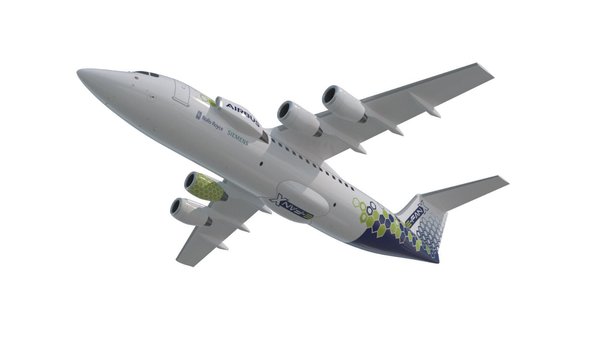Electric flight still a pipe dream
“Amsterdam to New York by electric plane? Won’t happen,” says professor Leo Veldhuis. He and researcher Joris Melkert discuss the future of electric flight.
Electric flight is still in its infancy, though it is already possible. “You can already buy a two-seater with which you can fly for an hour,” says Joris Melkert. The aircraft is manufactured by the Slovenian firm Pipistrel. TU Delft is partnering with this company in a research project to design a slightly larger model.But Veldhuis and Melkert say that electric flight will remain impossible for long-haul flights. The energy density of batteries is a factor of 50 or 60 lower than that of kerosene. “This means you need to carry too much weight in batteries; weight that is not used up in flight like kerosene,” explains Veldhuis. According to Melkert, this is not set to change any time in the near future: battery efficiency is improving by only 1 to 3% per year.
An intermediate solution is a hybrid-electric version that uses kerosene. “We burn the fuel in a turbine engine and use this to power a generator,” says Veldhuis. “The generator powers a number of electric motors distributed throughout the aircraft.”
An example is the Airbus E-fan X, which Melkert thinks will fly in 2020. “One of the four engines in this aeroplane is replaced with an electric motor and a number of
batteries,” he explains.

Airbus E-fan X © Airbus
Airbus approached TU Delft to develop a radically new aircraft concept based on hybrid-electric propulsion. “They want to test it in a fairly large aeroplane, comparable with the A320, which can fly 800 miles carrying 100 passengers,” says Veldhuis. This is one of the European projects being carried out as part of the Clean Sky research framework.
The aviation industry is responsible for some 2 to 3% of global emissions. Measures such as electric taxi systems and electric on-board systems powered by fuel cells can only reduce emissions by a tiny percentage. “If we really do our best, I estimate that hybrid-electric solutions will lead to about 10 to 15% CO2reductions by 2050,” says Veldhuis.
The real problem, think both researchers, is the growth of the global aviation sector by some 5% annually. The current rate of innovation can not keep up with that pace. Add to this the fact that a standard aircraft like the Airbus A320 costs about €100 million and has a service life of more than 20 years, and it will be clear why it will take a few generations of aircraft yet before commercial hybrid-electric flight becomes reality.
Veldhuis believes the way forward is to combine various measures. “One: electrify short and medium haul aircraft as much as possible by applying new concepts, new engine integration systems and by using batteries and fuel cells. Two: reduce the number of flights (it’s unavoidable!). Three: fly slower; that uses significantly less energy.”